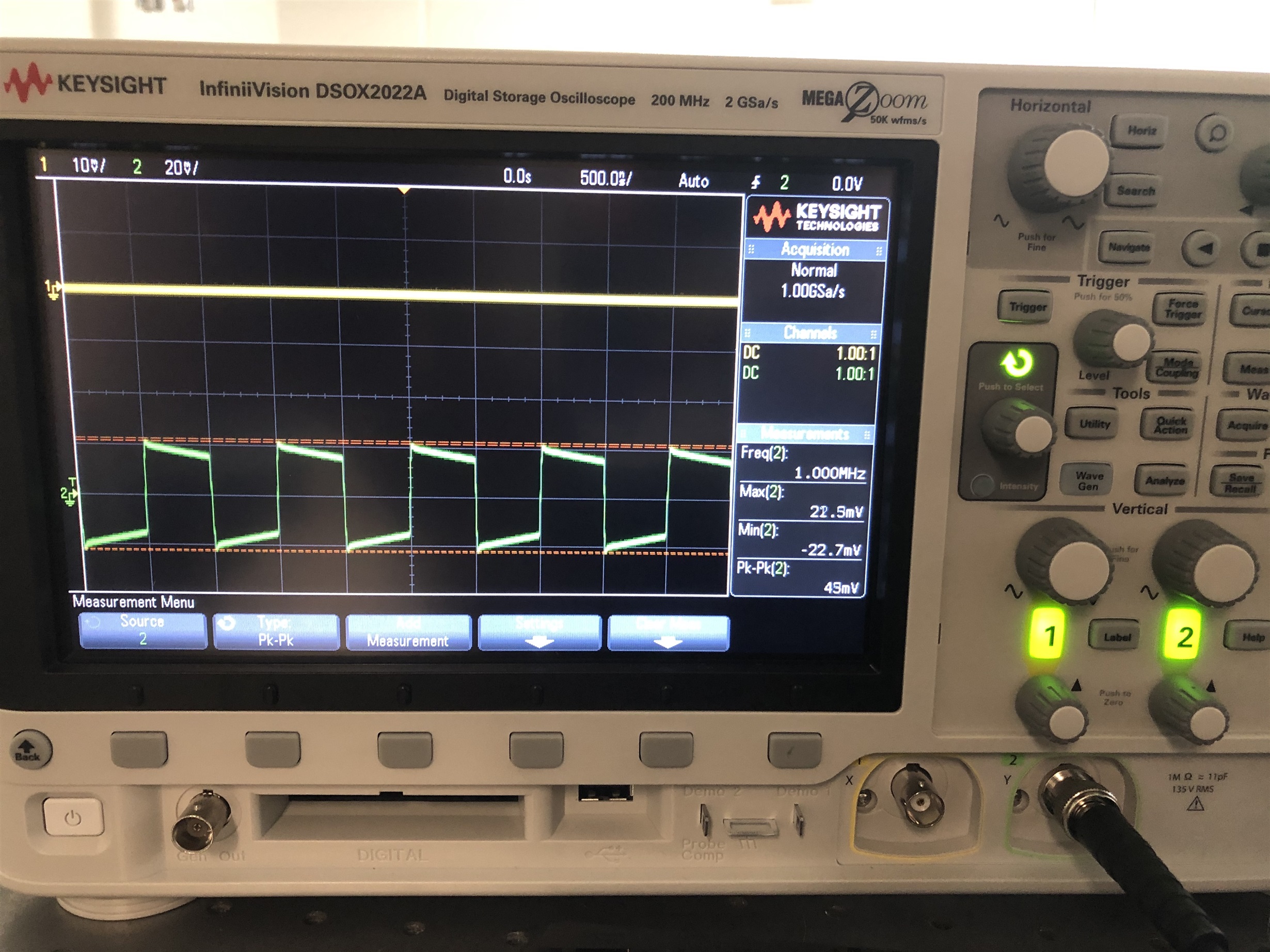Other Parts Discussed in Thread: OPA857
I'm trying to figure out the test mode right now, and the connection is as follows and I've attached a pic for the board:
- I've connected the TEST_SD pin to Vs to configure in test mode
- I have 3.3V connected to Vcc from a DC power supply
- Ground connected to the power supply ground
- I have the signal generator connected to the Test_in SMA connector
- 0.5Vpp for the amplitude and I vary the DC bias voltage
- Vo_P connected to the oscilloscope to observe the output
My question is that the voltage I measured on OUT & OUTN (from the positive side of R6 & R7) are 3.03V & 1.84V. However, while I change the DC bias voltage (keeping the 0.5Vpp amplitude), the voltages of these two nodes don't change at all, and the OUT voltage seems way too high comparing to the approximately 1.33V from the spec sheet. So I'm wondering what have I done wrong or the board is defective?
Thanks,
Xiechen





